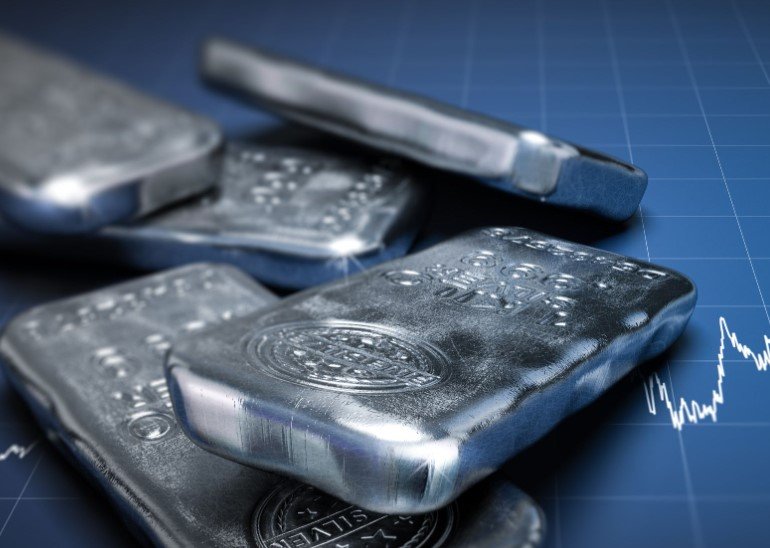Silver prices soared to an all-time high above $52.50 per ounce on October 14, 2025, as a massive short squeeze gripped the London market and sparked global chaos among traders. This surge, driven by surging demand for safe-haven assets and tight supply, has pushed precious metals into a historic rally, with silver leading the pack amid fears of liquidity shortages.
What Sparked the Silver Price Surge
Investors and traders watched in shock as spot silver climbed 3.9% in a single day, breaking past last week’s peaks and nearing levels not seen since 1980. The trouble started in London, the world’s hub for silver trading, where short sellers bet against rising prices but got caught off guard by overwhelming demand.
This short squeeze happens when those who sold silver short must buy it back at higher prices to cover their positions, creating a vicious cycle that drives costs even higher. Analysts point out that silver’s market is much smaller and less liquid than gold’s, making price swings more extreme. Gold itself hit a fresh record above $4,115 per ounce, marking eight straight weeks of gains.

Demand for physical silver has exploded due to its role in industries like solar panels and electronics, plus its appeal as a hedge against economic uncertainty. Global events, such as trade tensions and inflation worries, have fueled this rush. Traders now scramble to source metal from anywhere, even booking flights to ship bars across the Atlantic for quick profits.
Key Factors Behind the Short Squeeze
Several elements combined to create this perfect storm in the silver market. First, investor appetite has grown massive, with exchange-traded funds holding record amounts of silver that are not available for lending or quick sales.
Supply issues add to the pressure. Mining output has not kept up with demand, leading to structural deficits for years. Recent tariffs and import restrictions in major markets like the US have tightened inventories further, forcing buyers to pay premiums.
Here are some critical drivers of the squeeze:
- Record investment inflows into silver as a safe asset amid stock market volatility.
- Industrial demand spiking from green energy sectors, where silver is essential for solar technology.
- Short positions from big banks reaching extreme levels, equivalent to months of global mine supply.
On top of that, borrowing costs for silver in London have skyrocketed, making it expensive for shorts to roll over their bets. This has led to a global hunt for bullion, with prices in London trading at a $1.55 premium over New York spots, down from $3 last week but still signaling stress.
Platinum and palladium, other precious metals, jumped too, showing the rally’s spread. The four main precious metals have surged between 55% and 82% in 2025, dominating commodity markets.
Market Impact and Global Reactions
The squeeze has rippled through financial markets, affecting everyone from small investors to large institutions. Stock prices of silver mining companies have shot up, with some gaining over 10% in a day as traders bet on continued high prices.
Global trade flows are changing fast. Traders are using airplanes to move silver bars, a costly method usually saved for gold, to cash in on London’s higher prices. This unusual step highlights the desperation in the market.
| Precious Metal | 2025 Year-to-Date Surge | Current Price (as of Oct 14, 2025) |
|---|---|---|
| Silver | 82% | $52.59 per ounce |
| Gold | 55% | $4,115 per ounce |
| Platinum | 65% | $1,450 per ounce |
| Palladium | 70% | $2,100 per ounce |
Economic experts warn that if the squeeze persists, it could lead to broader commodity inflation. Central banks might respond by adjusting policies, especially with gold also at records. In India, a major silver consumer, festive demand has pushed local prices higher, adding to global tightness.
Memories of the 1980 Hunt brothers’ attempt to corner the market are resurfacing, when silver hit $50 before crashing. Today’s situation differs due to real physical shortages, not just speculation.
What This Means for Investors
For everyday investors, this rally offers both opportunities and risks. Silver’s dual role as an industrial metal and investment asset makes it volatile, but the current momentum suggests more upside if demand holds.
Experts advise diversification, perhaps mixing physical silver with mining stocks or funds. However, they caution against chasing peaks without a plan, as squeezes can unwind quickly.
Looking ahead, analysts from major banks predict silver could test $60 if the squeeze deepens, but supply responses from miners might ease pressures by 2026.
Future Outlook and Lessons Learned
The silver market’s chaos underscores broader trends in commodities, where supply chains and investor sentiment can create rapid shifts. With economic uncertainty lingering from global events like trade wars, precious metals remain a go-to for protection.
Traders should watch for signs of relief, such as increased mining output or shifts in investor behavior. For now, the rally shows no signs of slowing, keeping markets on edge.
If this story sparked your interest, share it with friends and drop a comment below on how you’re navigating these wild markets.
